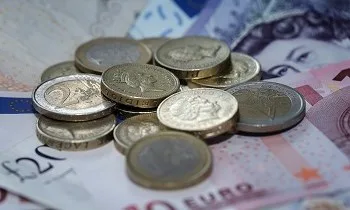
In the first of our series on costs of production in agriculture, we outline five key benefits of calculating your production costs.
Author
| 4th September 20185 reasons to calculate costs of production
With diminishing direct support for agriculture and increasing exposure to competitive world markets there has never been a better time to focus on production costs.
As this new series explains, knowing how much it costs to produce a tonne of wheat or any other crop is fundamental to any successful arable business.
Accurate costings allow more informed agronomic and financial decisions to be made. This in turn helps businesses overcome challenges posed by changes in commodity prices and input costs, government policy, tighter regulations, or shifting pest and disease threats.
Below are five reasons for calculating the cost of production:
1. Business sense
Understanding how much it costs to produce something and how costs are structured is fundamental to any business and farming is no exception.
Doing so drives efficiency and improves financial performance, by highlighting areas to improve and allowing more proactive crop marketing.
The aim is not to cut costs to the bone. Minimising cost per tonne requires getting the most from every input while maximising output, and may sometimes mean investing more.
Detailed costings are invaluable when planning changes, such as buying new machinery, changing rotation, or taking on additional land - especially if you are bidding against other farmers or contractors.
A strong business benefits you and those it supports, both now and in future generations. Building a strong business is therefore an important part of succession planning.
2. Better marketing decisions
Selling anything for less than it costs to produce makes no business sense, so knowing your cost of production per tonne can greatly improve decisions about what to sell, when and how much.
Farmers cannot control market prices, but knowing the “breakeven price” ensures as much as possible is sold for a profit and losses are minimised.
It helps when deciding whether to forward-sell or lock into fixed/minimum-price contracts and may reduce the chances of getting carried away by market hype and a desire to hit the top of the market.
3. Shape buying strategies
Knowing your costs and how they’re structured could also prompt more scrutiny of input purchases.
If fuel or fertiliser costs are higher than normal, for example, is this due to unavoidable market changes or agronomic reasons, or can the buying strategy be improved, such as through bulk orders, co-operative groups, or switching to a different supplier?
There is a benefit to other investment decisions too, notably machinery replacement.
Measuring machinery costs, including spares & repairs, depreciation, finance and other expenses informs decisions about when to replace equipment or persevere with what you’ve got.
4. Highlight problems
A big benefit of detailed cost analysis is identifying problem areas within the farm business, especially when costs are benchmarked against others.
There may be inherent problems with the cost structure that are hard to resolve, or other issues that are easier to change, but “unless you measure it, you can’t change it”.
Fixed costs, particularly machinery and depreciation, are a common issues on many farms, but yield variations also make a big difference to cost per tonne.
Andersons estimates up to 40% of wheat-growing land may not yield enough to cover actual production cost, and for other crops this can be up to 60%.
Combining yield maps with cost of production data to map “profitable tonnage” promises an effective way of identifying problem areas and determining the best action.
There may be good, sometimes unavoidable, reasons for having a higher cost structure, or allowing productive areas or crops to “subsidise” others, but doing so should be an informed choice.
5. Personal reward?
Calculating costs may be daunting at first, but there are many systems available to help ease the process and the end result can be rewarding.
This series will also guide you through the process and showcase examples of what others are doing.
There are many opportunities to join local benchmarking discussion groups, such as those run by AHDB, where results can be discussed with peers and ideas shared about what to do when problems arise.
This contact with like-minded farmers should not be underestimated, both from a personal and business perspective.
Other articles coming throughout this year include:
Apportioning costs correctly
How to interpret and use CoP data
Farming case study
Comparing costings models from the experts.
Plus, practical advice on what to measure on-farm, including:
Key performance measures in arable crops
Measuring and benchmarking fixed costs
Interpreting black-grass maps.